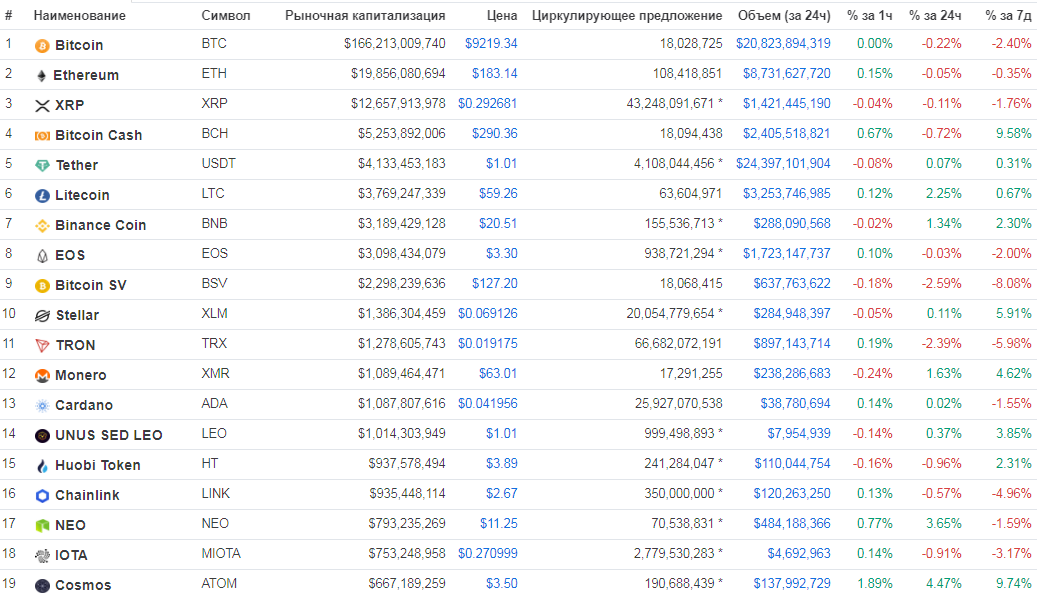The digital currency market remains stable. Traders can easily make money on automated trading. Bitcoin costs approximately 9-10 thousand US dollars. It’s time to think about how cryptocurrencies will develop further.
Many startups today are trying to predict how Bitcoin will behave. Financiers, in turn, are trying to figure out what the audience of cryptocurrencies is. In this article, I will try to answer the question of how the popularity of Bitcoin and other digital currencies is spreading. I will consider four aspects: research, geography, demography and trading.
Of course, it’s important to know who owns digital currencies. How old are they, what is their age, where do they live.
Brief background
Let me remind you that about two years ago, BTC was able to grow to 20 thousand US dollars. And many believed in his bright future. As I remember, experts predicted the growth of the first cryptocurrency to 100-200 thousand dollars. However, the reality turned out to be different. A year ago, Bitcoin fell to the $ 3,000 mark. Citizens rushed to forget about digital currencies.
At the end of 2018, only 8% of the world’s people owned digital currencies. True, a fall is a reason to buy up cryptocurrency at a low price. In 2019, investors began to buy Bitcoin again and another growth began on the market.
A few words about digital assets
Many people are sure that modern currencies have already “switched to digital”. This delusion, as far as I can tell, is inherent even to some specialists in trading. This is a misconception. Modern money is still not digital. So blockchain is really a promising technology. It will be in demand in traditional finance.
Classic financial institutions do not yet offer money that transfers value. So these are all just prototypes of future operations. The fact is that when we make a non-cash payment, money does not move anywhere. Yes that’s right! They stay in place. This is why transactions are often very fast. In fact, then the bank must process the payment and make the necessary transactions. So all this is just imaginary digitalization.
How the financial system works
In the classical financial system, there is usually a very deep “division of labor”. Commercial banks are usually responsible for keeping money. The Central Bank issues money most often. Money is transferred from one point to another by payment systems. The audit chambers and other similar organizations are responsible for the audit. Of course, government regulators control the system. Most of the operations that we perform involve all five elements of the system..
Cryptocurrencies differ from fiat currencies in that all five elements are embedded in the code. In other words, everything works by itself, without intermediaries. Bitcoin architecture allows transactions, issuing money, auditing, storing and controlling money on the network. So to speak, five in one.
Why the first cryptocurrency is unique
As you can imagine, BTC coin is amazing for many reasons. This is the first truly “digital” money in human history. When you transfer bitcoins, you are making a real transfer of value. Funds are really moving! This does not require multiple intermediaries. Everything is built on deep mathematical theory.
Unfortunately, not everyone understands the difference between bank transactions and the BTC network. After all, this is a very delicate thing. However, the difference is enormous. The advent of digital currencies has truly revolutionized the world of finance.
It is no coincidence that many developers are trying to copy the architecture of bitcoin. This whole process, by and large, can be considered the transition of ordinary money to digital.
Those who already understand the prospects of cryptocurrencies today are reaping the benefits.
Trend one: research
According to most studies, today the main centers of the cryptocurrency world are in the United States and China. Anyway, there are the most miners, cryptocurrency owners and just enthusiasts there..
So, about 10-11% of US citizens have bitcoins and other digital currencies. The awareness of the digital currency industry is growing in the world. This is evidenced by a recent survey conducted by Blockchain Capital.
By the way, at the end of last year there were more than 32 million BTC wallets in the world. True, the number of Bitcoin users is much smaller. Traders usually own multiple wallets. I assume there are about 10-15 million people owning bitcoins.
This means that so far only 0.4% of the world’s inhabitants are participants in the cryptocurrency market. However, there are many more of those who are somehow interested in cryptocurrency. These may be people who, for example, just heard about Bitcoin. Or those who are close to buying a few BTC. There may be significantly more than 15 million such people who have heard something. So the cryptocurrency community, in my opinion, may consist of 100 million or more people.
Cryptocurrency infrastructure of the future
Any universal payment system, according to scientists, must include certain elements. The logic is something like this:
- Funds need to be stored somewhere.
- They need to be controlled somehow.
- Money needs to be issued and distributed.
- The system must process transactions and audit.
Until the BTC network appeared, all these elements existed separately. Bitcoin connected them into a single whole and made them decentralized. This, it seems to me, is his revolutionary spirit..
Interestingly, all elements are not needed to build a decentralized network. For example, you can do without auditing. In the latter case, we will receive a strictly anonymous payment system. Other elements can also be included or excluded from the system. And even make them centralized.
Cryptocurrency hybrids
Examples of systems: bank. In this system, all elements are centralized. These are rubles, dollars and all other fiat. On the other hand, bitcoin is a completely decentralized system.
As you can imagine, there are also intermediate options. So, Zcash and Monero are not audited (no transaction history). And XRP cryptocurrency differs from bitcoin by centralized emission (money is issued by Ripple itself).
By the way, from the point of view of the exact terminology, XRP cannot be called a cryptocurrency. Because it has a centralized emission. Such hybrids are commonly referred to as digital currencies. But in the article we will use both of these concepts as synonyms..
There are other interesting examples of hybrids: the stablecoin Tether and the Gemini Dollar. These are centralized digital currencies. Their release, as you understand, is controlled by organizations.
Trend two: geographic
From the point of view of geography, nothing has changed in ten years. Cryptocurrencies have gained the greatest popularity in the United States and China. True, today digital currencies are actively penetrating the EU countries..
The most favored nation treatment for cryptocurrencies was created in the European Union. This is the most liberal cryptocurrency legislation. Bitcoin is also well received in Latin America. In Venezuela, due to hyperinflation, digital currencies have become a real means of payment. Also, cryptocurrency is loved in Colombia. Perhaps because it can be used to trade drugs.
The situation in Africa is no less interesting. In the rich and poor countries of this continent, people strive to get rich from cryptocurrencies. They are attracted by the game on the difference in the rate and automatic trading. After all, Africans often have no other earning opportunities. The word “bitcoin” (in English) often hits Google search trends in a number of African countries.
If for large countries bitcoin is more likely a rival to local feats, then for small countries the situation is the opposite. Countries like Malta or Belize are using bitcoin to bolster their financial systems.
The main problems of banks
It is interesting to talk about another aspect of payment systems. Banks have one big problem – they are poorly connected to each other. What do I mean? Today, text files can be opened on any computer. However, you can manage your account only in the financial institution where the account is opened..
It is very difficult to transfer money across the border. You have to use expensive intermediary services. Intermediaries sometimes even monopolize such services, as SWIFT did. Today, disconnecting from SWIFT is a big problem for banks. Threatens to lose money. So, the United States is threatening Russia with sanctions – disconnecting its banks from SWIFT.
Unfortunately, the situation in the cryptocurrency world is not much better. After all, to transfer funds from one network to another, you need to try. Intermediary services are not cheaper than in the fiat world.
So in the future some kind of unified system is bound to emerge. So that you do not need to use the intermediation of exchanges. Assets must interact with each other freely.
Blockchain and traditional finance
Digital assets must be completely determined by the system in which they are issued. These are the security requirements. And blockchain can provide such security.
Blockchain can become a “technology of trust” between two parties. It allows you to digitize “trust” to transfer value from one system to another without problems.
Blockchain technology allows for an agreement on the state of any digital asset. Note that this is just a tool. It does not define the system itself. It can be used as a drill or saw for specific tasks. For example, to create bitcoin.
Trend three: demographic
According to many surveys, residents of large cities, regardless of age, have certain ideas about cryptocurrencies. Bitcoin is the most popular. In the United States, according to ING, almost 90% of US citizens have heard of BTC. The survey was conducted in mid-2019. However, people over 35 are not enthusiastic about bitcoin. The first cryptocurrency is really popular among young people. These are people 15-35 years old.
Young people also invest heavily in bitcoin. Percentage ratio: 20% of young people from 18-35 years old. At the same time, outside this age, only 10% of people 34-45 are investors in cryptocurrencies. Of people aged 45-55, only every 20 buys cryptocurrencies (5%), and beyond 65, the number of investors in BTC does not exceed 2%.
And what is outside the USA?
Interestingly, Turks are most interested in cryptocurrency in Europe. There are as many as 18% of Bitcoin lovers in Turkey! Bitcoin is popular in Poland and Romania (approximately 11-12% each). In Spain, the popularity of the crypt is slightly less – 10%. In other countries, digital currencies are even less interested. For example, in France there are only 6% of BTC enthusiasts.
What digital assets will be created in the future
It used to be difficult to imagine that groups of enthusiasts could create their own “money”. We now know that this is possible. Bitcoin is not a government initiative. It was created by a group led by the mythical Satoshi Nakamoto..
Now you can create the most outlandish assets with a minimum of initial funds. It is enough to have several partners and an idea. After that, you can conduct an ICO, get investments and start working.
At the same time, banks are still using the most archaic assets. They don’t even really tolerate the cost. Their networks are absolutely centralized, and their reliability is guaranteed by the state, and not by the very architecture of the payment system. So it is likely that sooner or later banks will switch to more advanced technologies, including blockchain..
How cryptocurrency differs from tokenized assets
It is important to understand the difference between digital currency and real asset turned into tokens.
To get a tokenized asset, you need to have something real: oil, ruble, dollar, gas, millet, timber, real estate, etc. You can add a blockchain to a real asset. To simplify rights management.
On the other hand, bitcoin is not a tokenization of some real thing. This is a real digital asset. From this, obviously, all the advantages and disadvantages of this cryptocurrency flow. For example, BTC’s volatility stems from its digital nature. Tokenized gold will behave more calmly. But bitcoin is an independent currency and has more potential..
In the future, regular fiat will be replaced by cryptocurrencies. An international network based on trust will be created. Digital assets of various kinds will be able to freely transform into each other without the participation of intermediaries based on blockchain technology.
Trend # 4: Trading
The process of globalization is especially noticeable in the trade book. There are cryptocurrency companies in the USA, EU, Russia, Africa, Asia and other regions of the planet. According to Coinmap, more than 13 thousand companies have been created in the world that buy and sell digital currencies..
ATMs where you can buy bitcoins are also located around the world. At present, according to ATM Radar, there are 4-5 thousand such ATMs. They are located in over 75 countries. Most ATMs in Canada, United States and UK.
All this means that digital currencies have become a global phenomenon. Almost all countries of the world have their own developed cryptocurrency communities. At the same time, there are countries in which the cryptocurrency industry is most developed. These are the United States, Japan, Korea, China and India..
Summing up
So, most bitcoin owners live in the United States and China. At the same time, cryptocurrency is popular in poor countries, as it allows you to save assets during hyperinflation. So in countries like Turkey and Venezuela, digital currencies play a significant role..
Digital currencies are best treated in financial havens, countries like Malta and Belize. In Russia, full-fledged cryptocurrency legislation is not yet pleasant. Although some bills are already being considered.
In general, the leading countries of the world do not intend to ban bitcoin, although they are going to take control of it. We can say that the world is gradually accepting cryptocurrencies, although not without difficulty.
Watch the video “The World in 10 Years. Bitcoin as the foundation of a new world order “:




